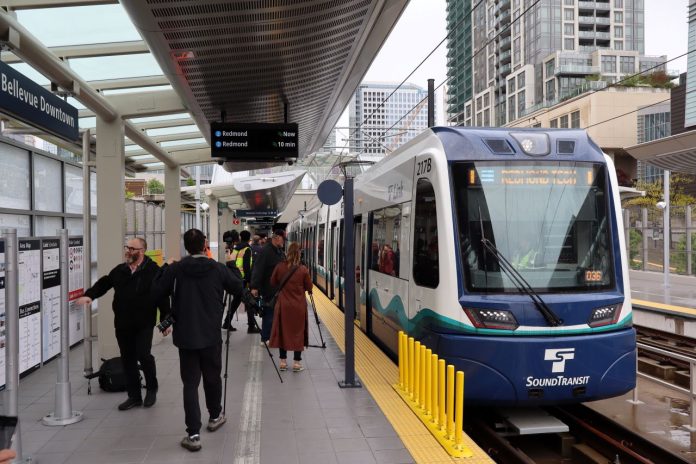
The Puget Sound region is about to see a major light rail expansion, as East Link, to be known as the 2 Line, launches mid-morning tomorrow. The Urbanist has everything you need to know about this momentous occasion.
When will service start? The opening day celebration starts at 10am at Downtown Bellevue Station with speechifying — you can RSVP here — but trains won’t actually start running until an hour later, with the first train set to leave South Bellevue at 11:02 am, and the first train leaving Redmond Technology at 11:05am.
When will trains be running? After Saturday morning, trains will run from 5:30am to 9:30pm every day. Sound Transit will run trains every 10 minutes. If you need connections after 9:30pm, utilize local King County Metro service or Sound Transit express buses.
How do I access trains from Seattle? Sound Transit express buses provide the most direct connection with the 2 Line for riders coming from Seattle. The 550 heads south through downtown on 2nd Avenue and connects with trains at South Bellevue as well as Downtown Bellevue Station. The 545 heads north through downtown on 4th Avenue and connects at Redmond Technology, and the 542 does the same from the University District’s two light rail stations.
Where does the starter line go? For now, the 2 Line serve eights stations in Bellevue and Redmond. Until further extension, South Bellevue Station is the southern terminus and Redmond Technology Center is the northeastern terminus. South Main, Downtown Bellevue, Wilburton, Spring District, BelRed, and Overlake Village are the six stations in-between.
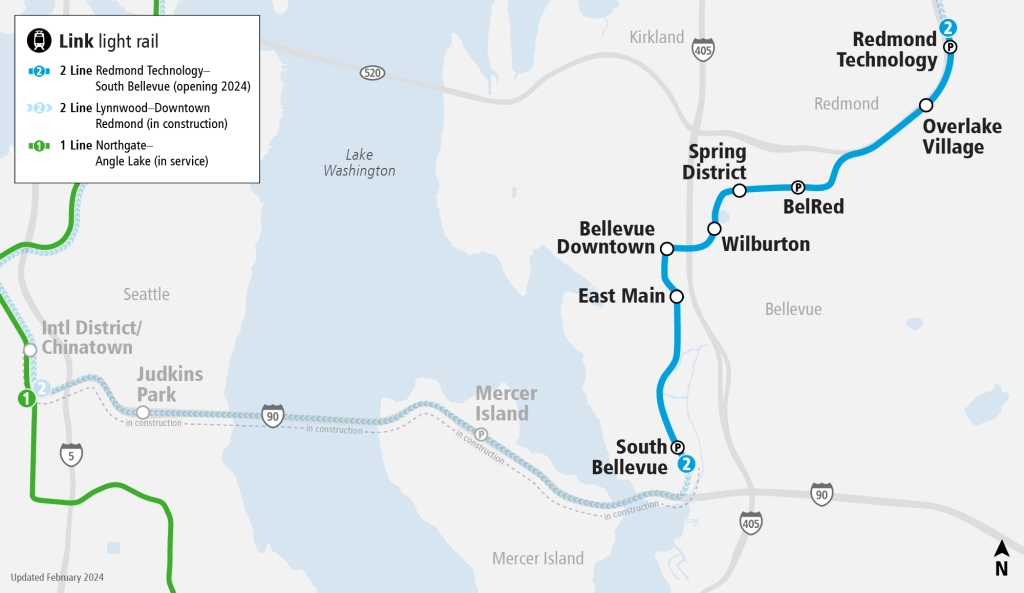
From South Bellevue, the line passes through green meadows of the Mercer Slough before passing into a tunnel to reach the shiny towers of Downtown Bellevue and bridging over I-405 and the car lots of Wilburton and the Bel-Red corridor before hugging SR 520 to reach Overlake and Redmond Technology. Along the elevated sections heading into downtown, the view is quite spectacular, as captured in the video below.
As the press train returned from the 2 Line's northern terminus at Redmond Tech, we took in the view of Downtown Bellevue. pic.twitter.com/deeE9UdY5E
— The Urbanist (@UrbanistOrg) April 25, 2024
What about Judkins Park Station and Mercer Island Station? With work still ongoing to complete work on the light rail guideway on the I-90 bridges, the stations in Mercer Island and Seattle’s Rainier Valley remain mothballed. The last update from Sound Transit is that service is expected to extend into Seattle, with 2 Line trains terminating at Lynnwood City Center Station, sometime in 2025, but no start date has been announced.
Where to celebrate? The Urbanist is hosting an opening day celebration at the Goose Pub and Eatery. And Move Redmond is holding a celebration at Overlake Station, too. Plus, Sound Transit is hosting a stamp scavenger hunt.
The long road to get to the first train
The journey to actually get a light rail line up and running on the Eastside was tumultuous, to say the least. King County Councilmember and Sound Transit board member Claudia Balducci has had a front row seat to all stages of the debate, having served on the Bellevue City Council from 2005 to 2015, a time period that includes the most contentious years for East Link when the question of whether light rail would even come to Bellevue was still very much up-in-the-air.
“This was the heart of anti-light rail opposition, right here in Bellevue, and some people spent millions of dollars to try to defeat the initiatives to fund it [and] to file lawsuits to stop it. We got people elected to the Bellevue City Council who I think the fairest thing you could say was that they were willing to see it not happen, if they didn’t get very specific things they wanted,” Balducci told The Urbanist this week.
After the Sound Transit 2 ballot measure passed in 2008 — with 57% of Bellevue voters saying yes — three years of debate followed to find a path through Downtown Bellevue that stakeholders could agree on. Most of the routes steered clear of property owned by light rail opponent Kemper Freeman, in control of a significant swath of downtown including the Bellevue Square Mall, instead skirting the edge of downtown close to the city’s central bus station.

Originally, Sound Transit approved a preferred route that would have routed light rail on surface streets, travelling up 112th Ave NE to Main Street, before circling to the current location of Bellevue Transit Center via 108th Ave NE. But that option wasn’t okay with the City of Bellevue itself.
By 2010, the Bellevue City Council had coalesced around a short tunnel underneath 110th Avenue NE, exiting downtown to the east along NE 6th Street. But it took another year to get Sound Transit’s board to agree to the plan, even with the City of Bellevue taking on some of the cost burdens to come with a tunnel. In the end, Sound Transit board members like Seattle Mayor Mike McGinn and King County Councilmember Larry Gossett voted against the downtown tunnel, concerned about increasing costs that could delay other projects.
The final alignment bypassing Bellevue Square didn’t stop Kemper Freeman from joining a legal battle to stop the entire line from being completed, taking a suit that alleged Sound Transit was violating the law in repurposing I-90’s express lanes across Lake Washington all the way to the state supreme court, where the argument was ultimately rejected.
“My personal test is, 50 years from now, when I’m not around anymore, will people ask themselves, ‘Who thought this was the right place to put the station?'” Balducci said. “I do wish we could have found a way to put it closer to the center of downtown.[…] Could we have put it on 108th? Could we have put it on Bellevue Way? I understand the reasons we didn’t. But that is something I’ll always wonder if we could have got it more closer to the heart of downtown Bellevue.”
But Balducci said ultimately the station location that was chosen for downtown Bellevue still serves riders pretty well: the platform, perched on the edge of the tunnel under downtown, brings riders up to the surface just on the other side of the street from bus connections. “Riding through there and looking at it: it’s not that bad, the station actually connects to the transit center pretty well. At the time, I thought it wouldn’t, but it does.”
South Bellevue
This southern terminus station is parked in the Mercer Slough, which has limited the transit-oriented development potential — although Sound Transit did find room for a 1500-stall parking garage abutting the station, as we covered in our “first look” piece. The presence of quaint and development-adverse Beaux Arts Village (one of several micro-suburbs around Bellevue) to the west puts a further nail in the coffin for those hoping to see something approximating a city when they exit South Bellevue Station.
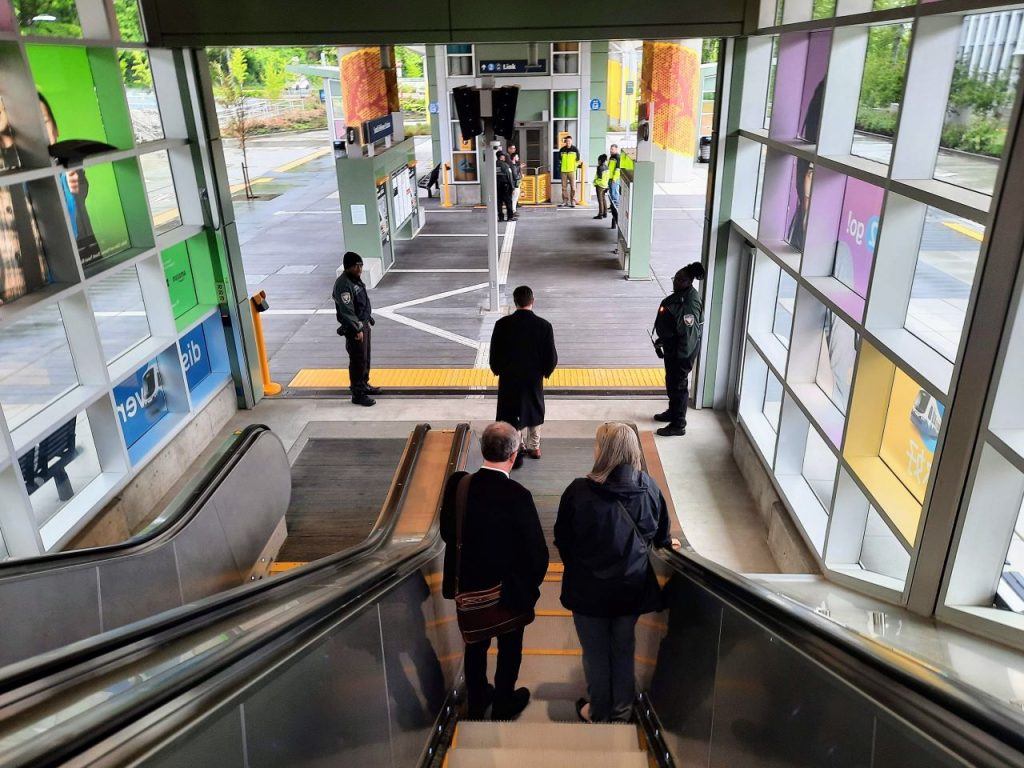
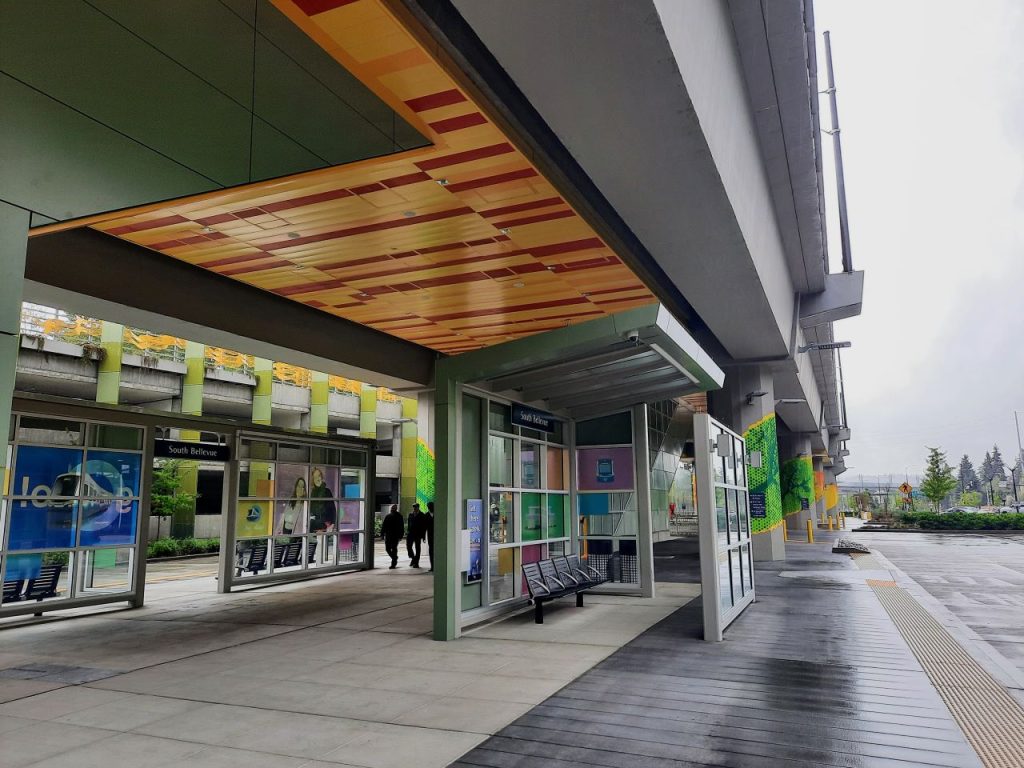
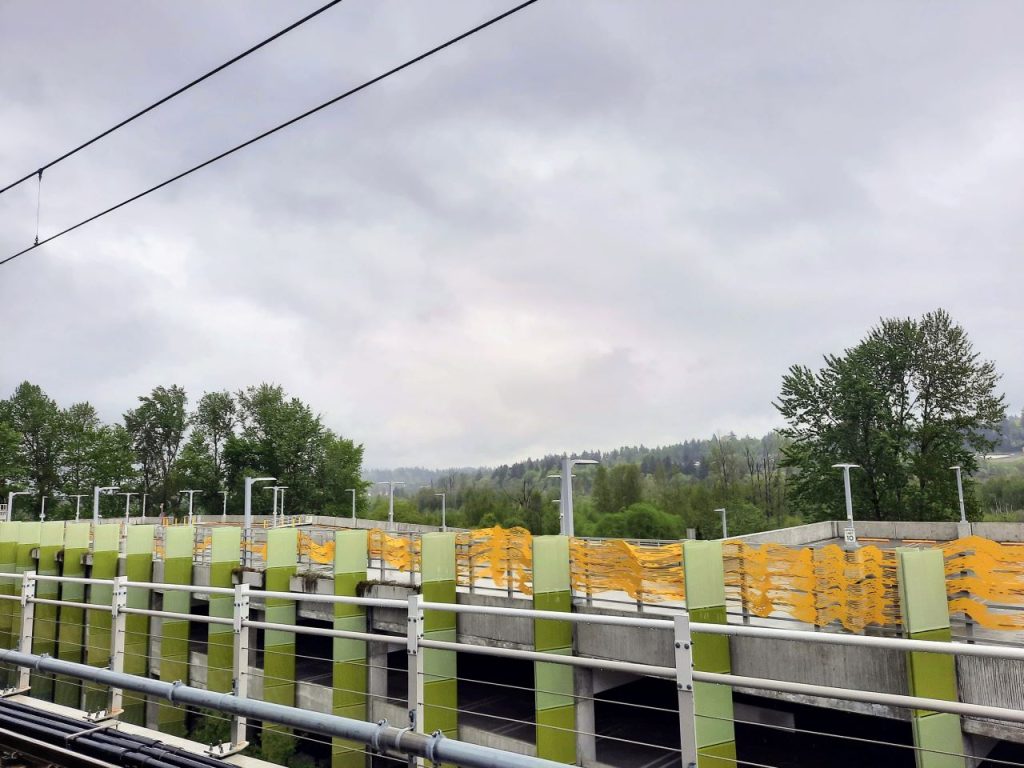
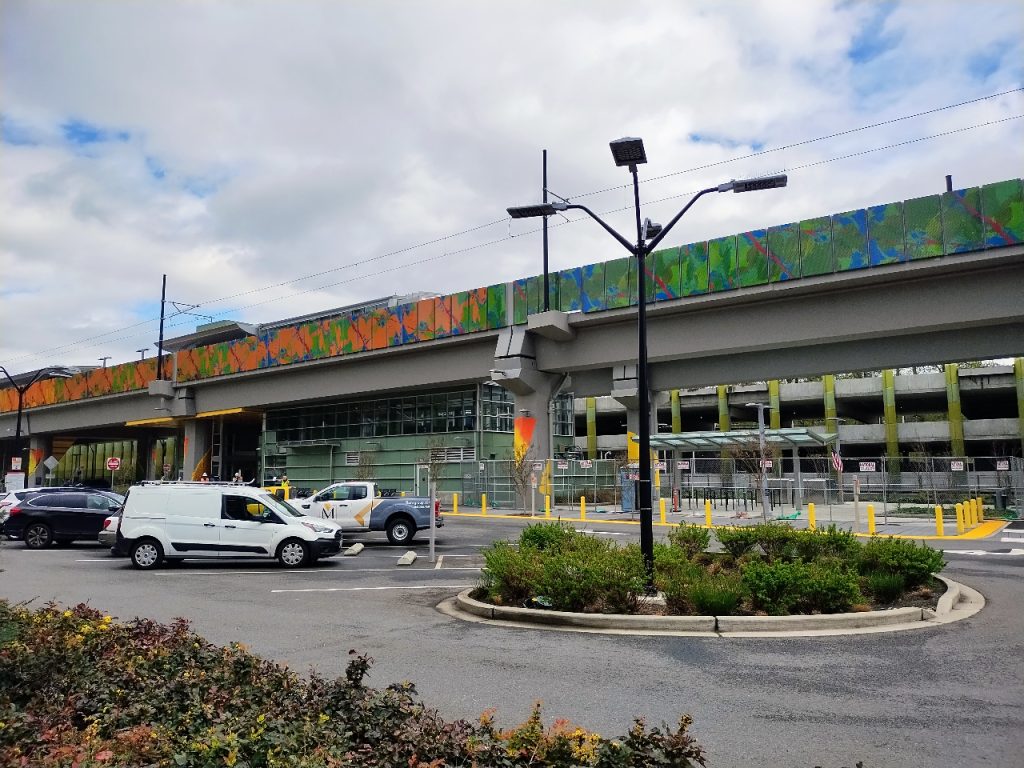
What 2 Line riders will find is excellent hikes in the Mercer Slough Nature Park including “casual grazing” in a City-managed blueberry farm. We are told picking season runs July to September.
East Main
The area around East Main isn’t as rural as South Bellevue, but it hasn’t exactly blossomed with transit-oriented development either. The nearby presence of I-405 limits opportunities to the east and continued existence of single family zoning to the west has limited redevelopment opportunities to a narrow band. There are two hotels and a ballet theater near the station which should at least generate some ridership and some apartments have gone in north of Main Street. On the other side of 405, a Lexus dealership eats up a wide swath of land along Main. There are opportunities for housing and amenities here, but not much has materialized yet.
Downtown Bellevue
Downtown Bellevue is the magnum opus of the 2 Line extension with new office towers, tons of retails, and 13,000 homes that have either gone in recently or slated to arrive soon, as we laid out in our development roundup. The station itself is also impressive with the skyline looming over an open-air recessed station with tons of light funneling though the glass roof. This is going to be a well-used station and riders are going to relish using it, given the thoughtful touches and sweeping views.
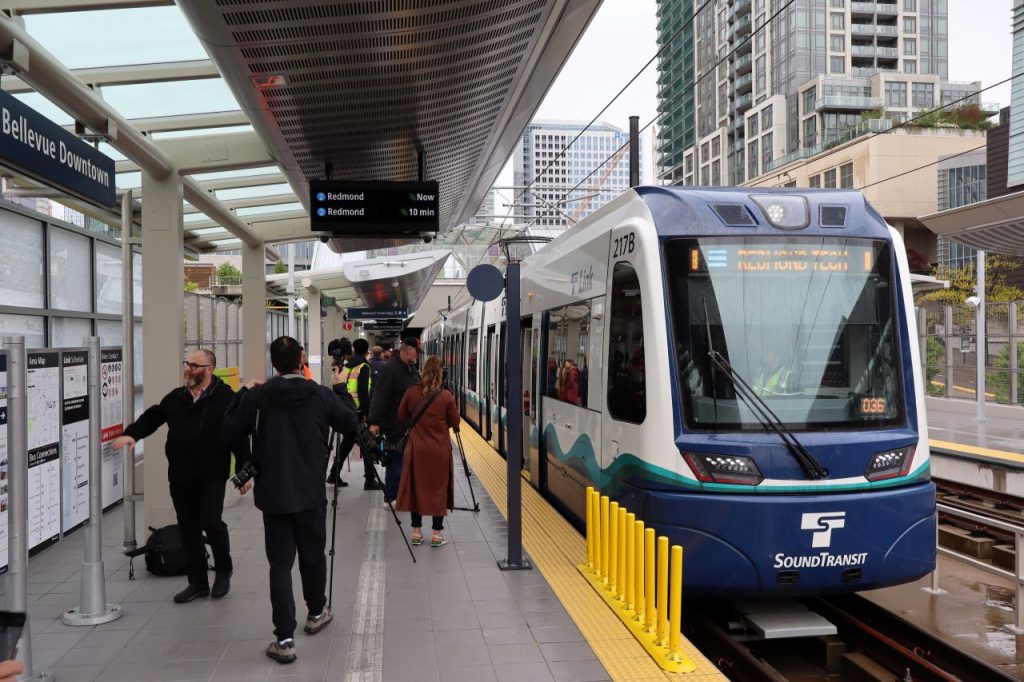
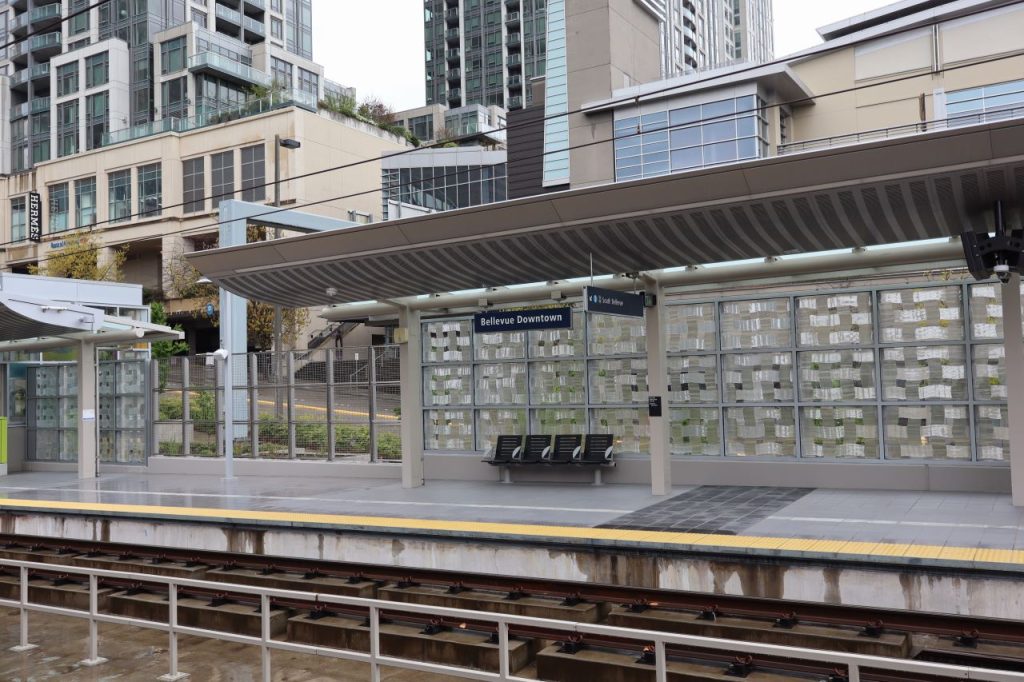
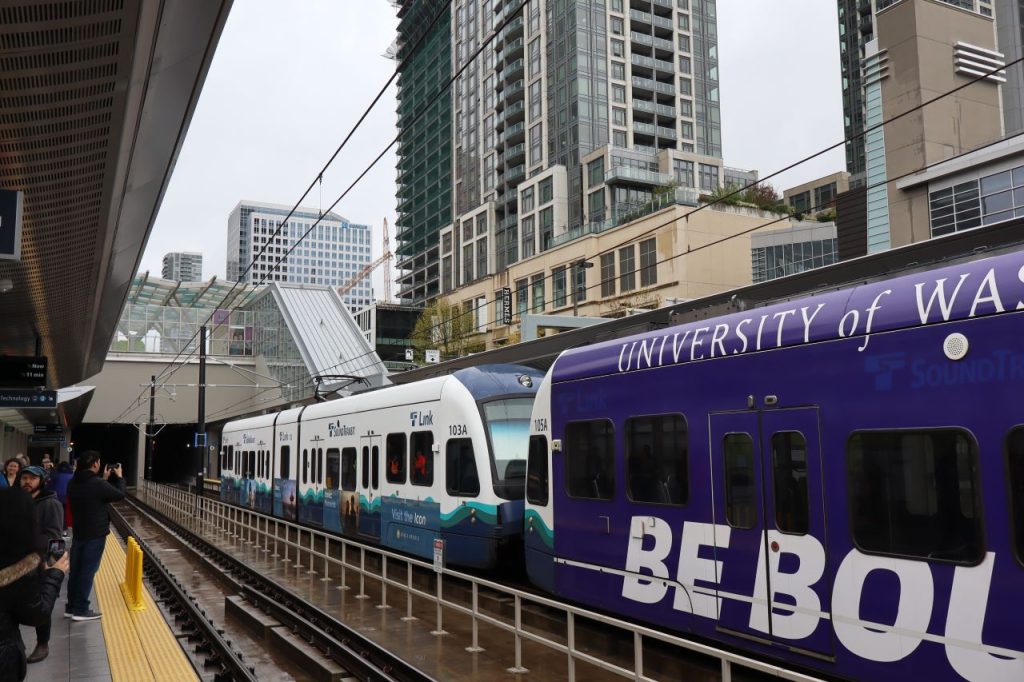
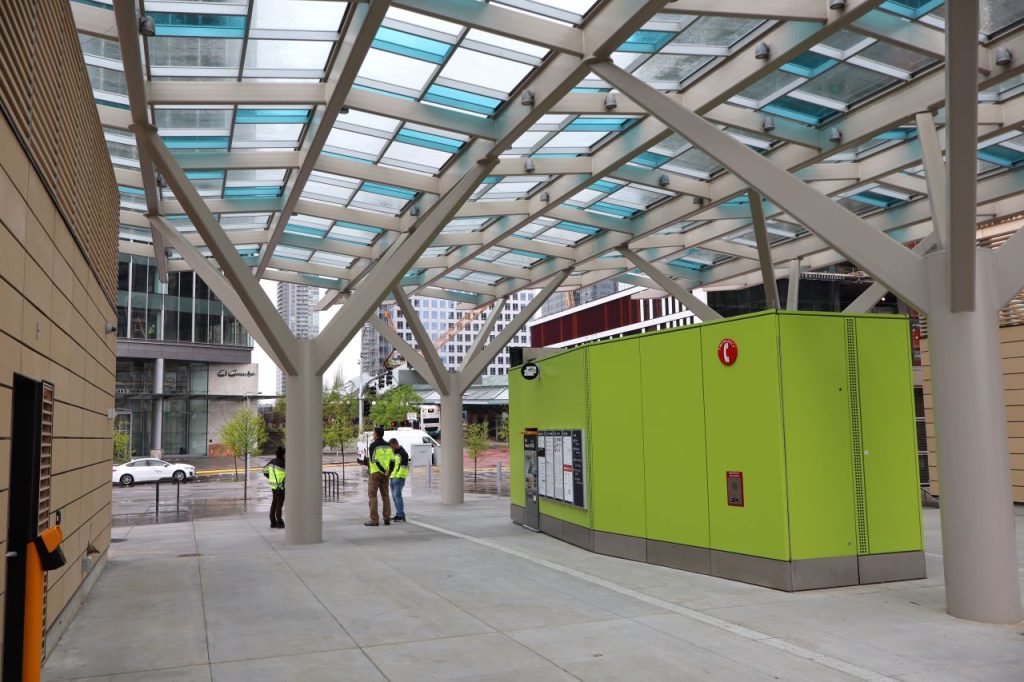
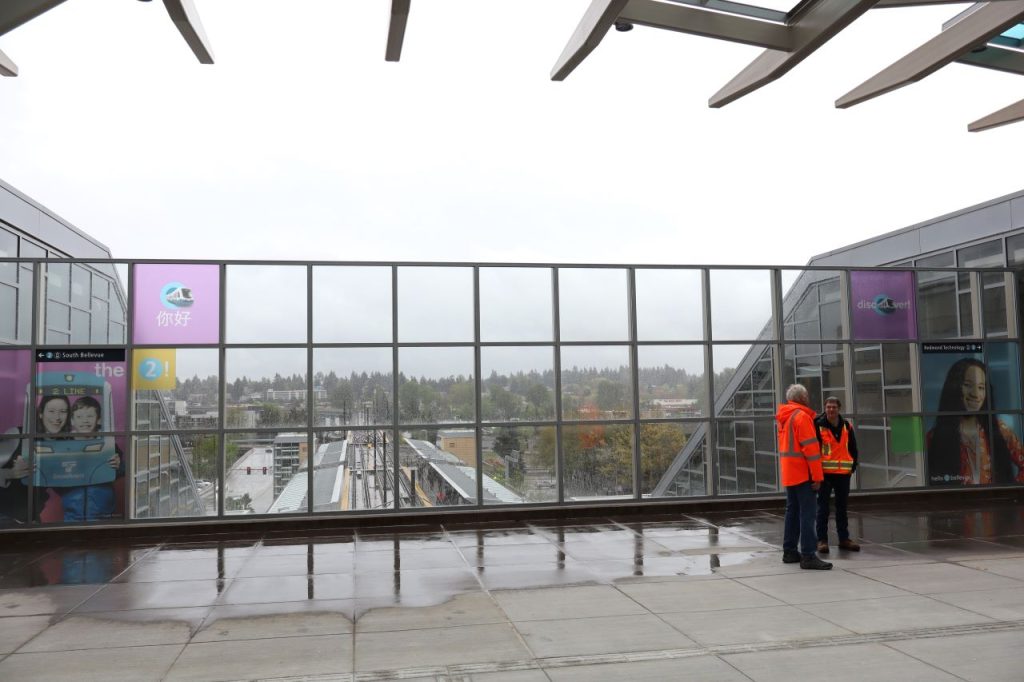
Wilburton
Just across I-405, the 2 Line arrives at Wilburton Station. This area is slated to be a point of emphasis in Bellevue’s growth strategy going forward, but for now it’s largely car dealerships, strip malls, and medical centers, all with lots of surface parking. Besides buying a Porsche, what it does offer riders now is sweeping views of downtown from the elevated platform, plus there are a number of businesses ringed around Lake Bellevue and in various malls in the area.
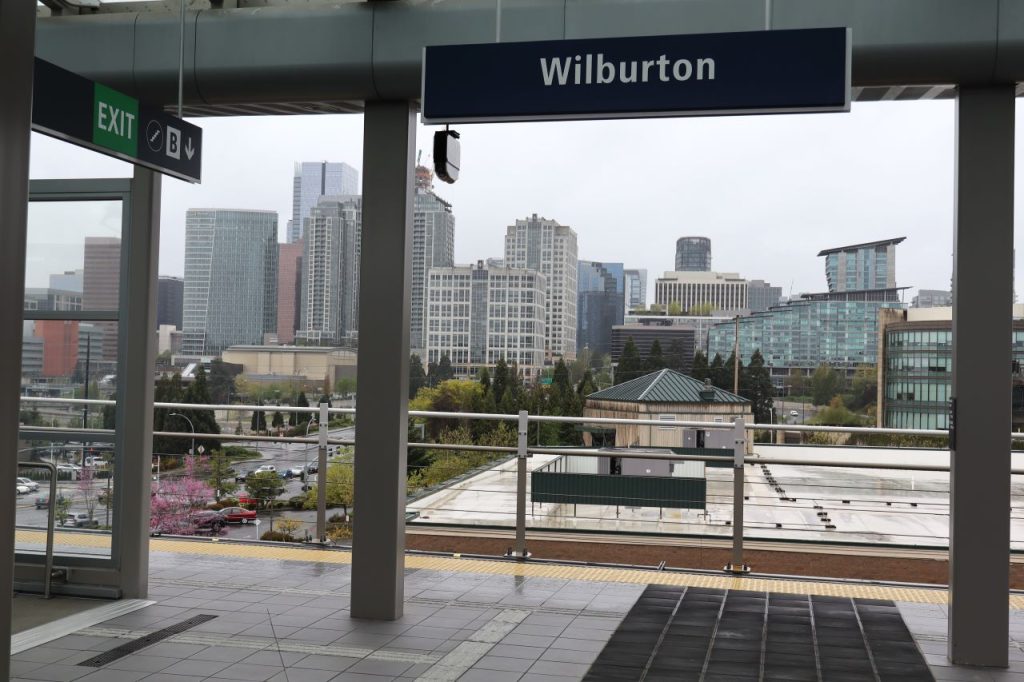
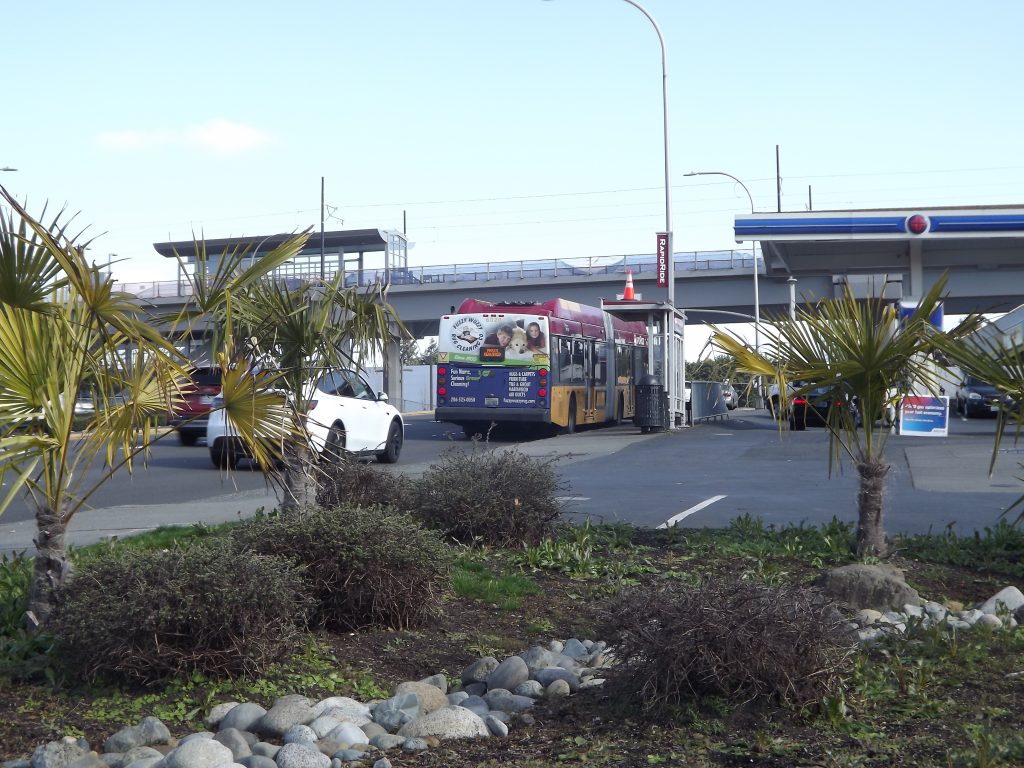
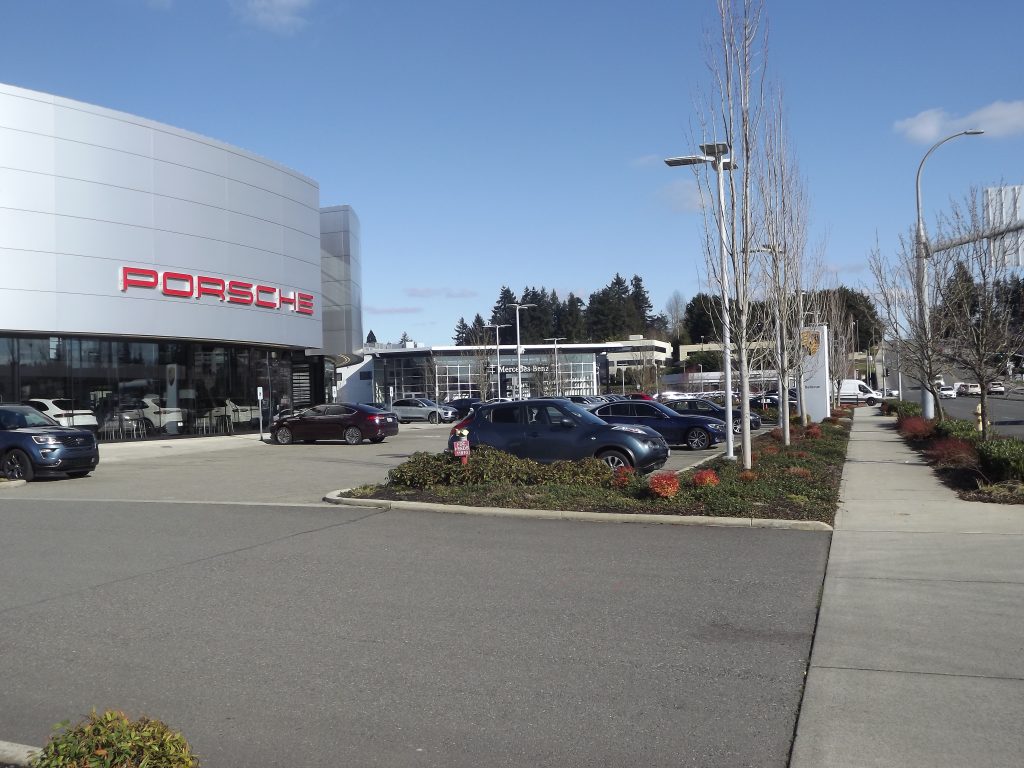
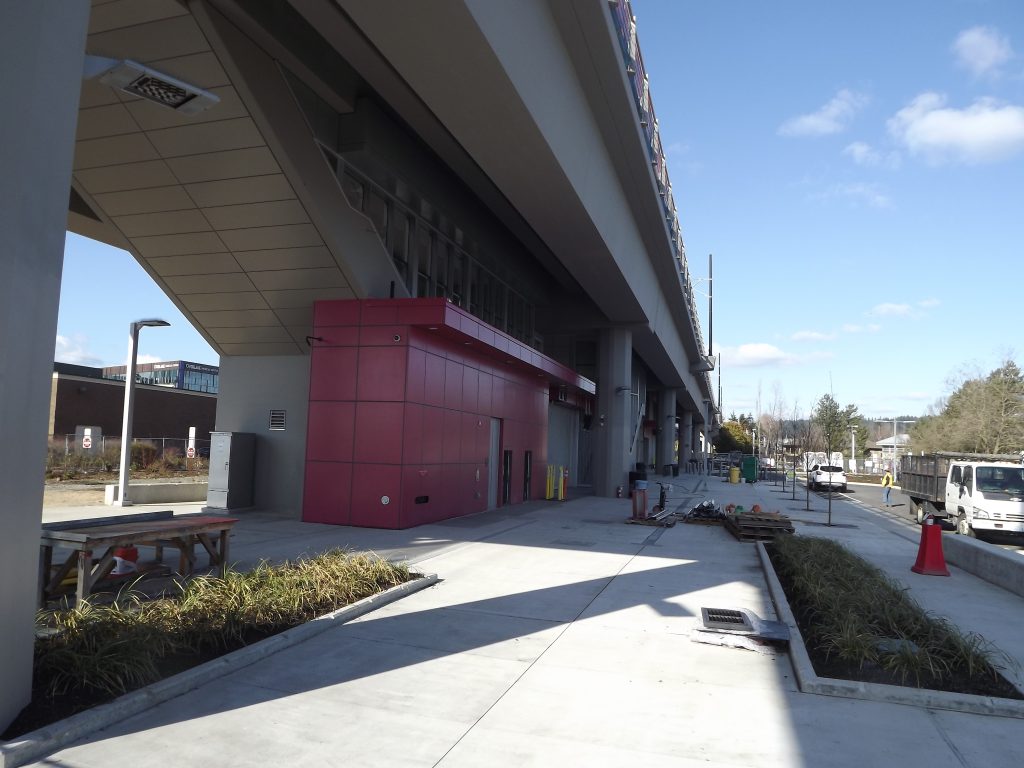
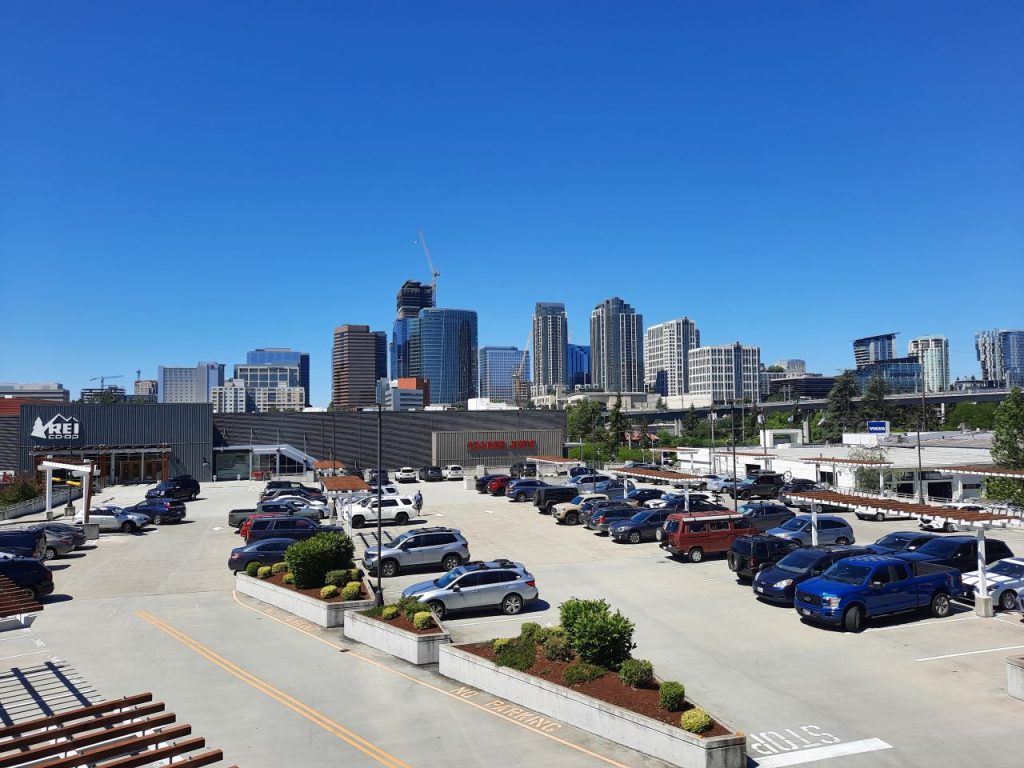
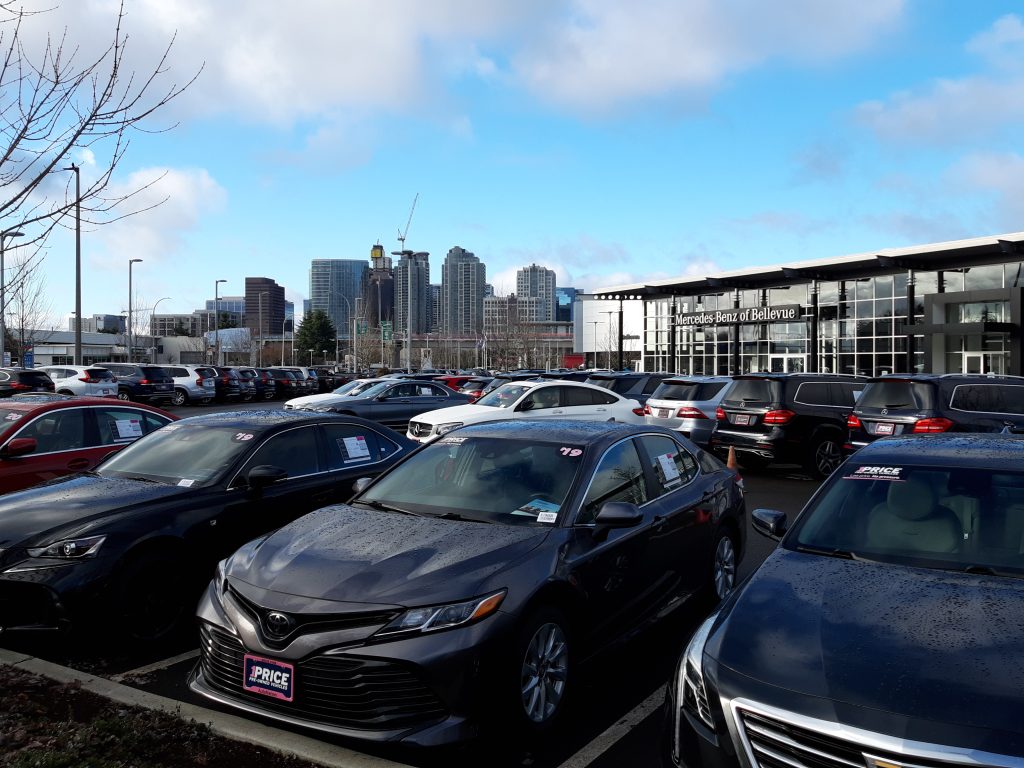
Spring District
Bellevue has focused planning efforts on the Spring District in hopes of attracting a mixed-use corporate campus to the vicinity of the area’s new light rail station. Initially it succeeded in landing REI and Meta, but REI pulled out and Meta dialed back its plans, subleasing much of its campus. Still, the master plan has delivered millions of square feet of office space and hundreds of new homes with more than 2,000 units in all, when counting those in the permitting pipeline. See more detail in our roundup. However, the immediate vicinity of the station is somewhat desolate for now. Though, Sound Transit is working to redevelop surplus land near the station, with some affordable housing included.
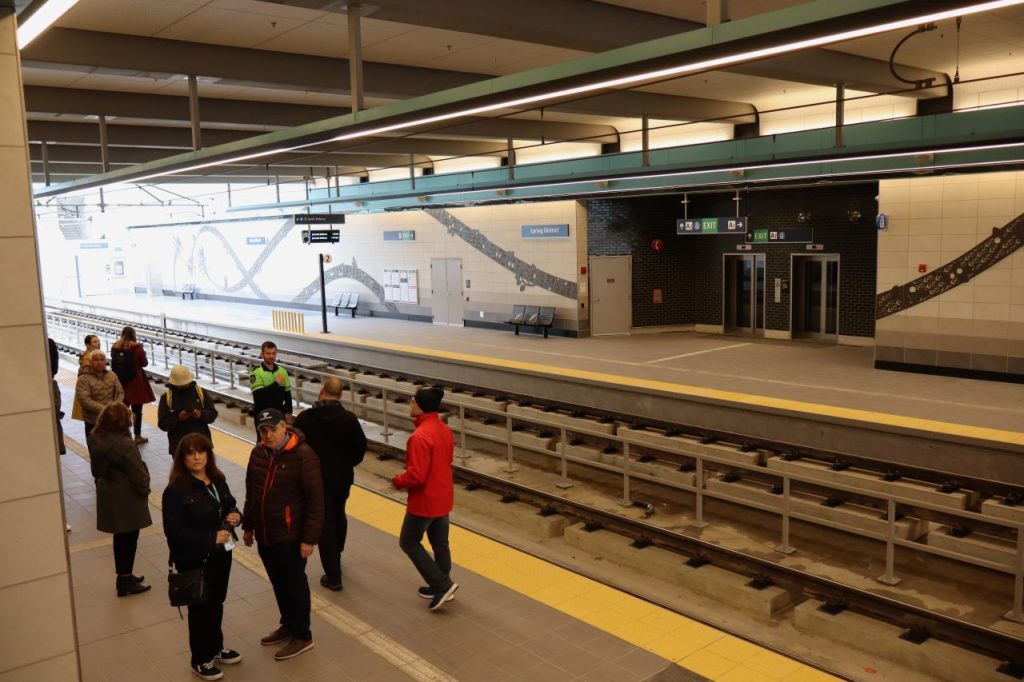
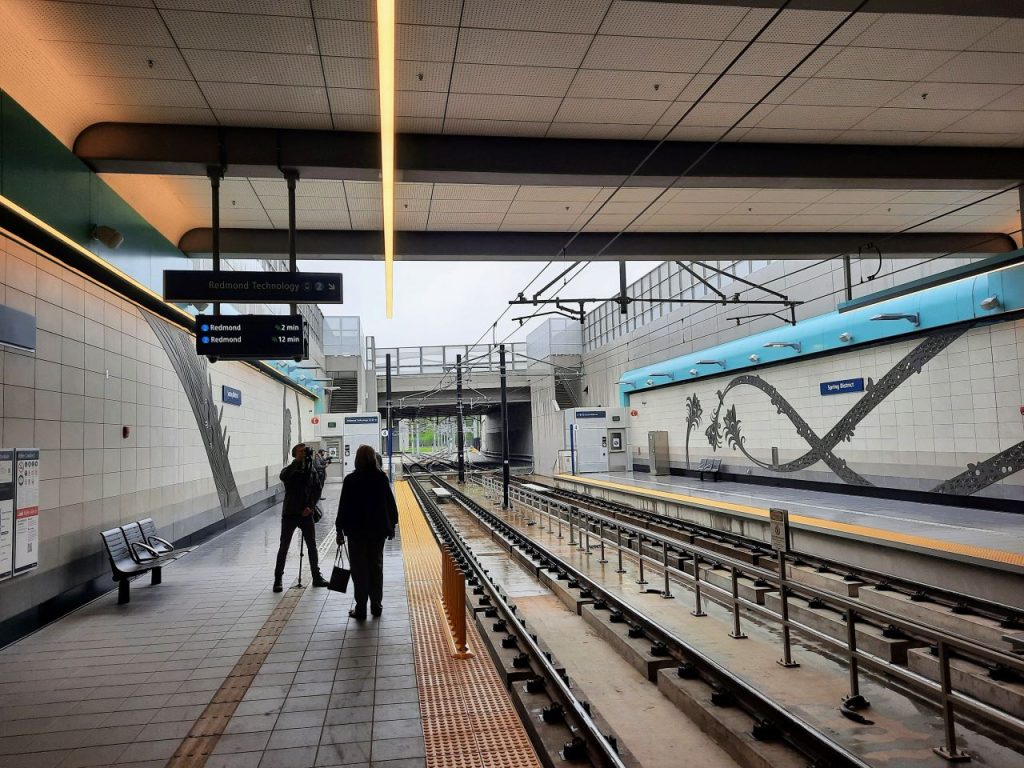
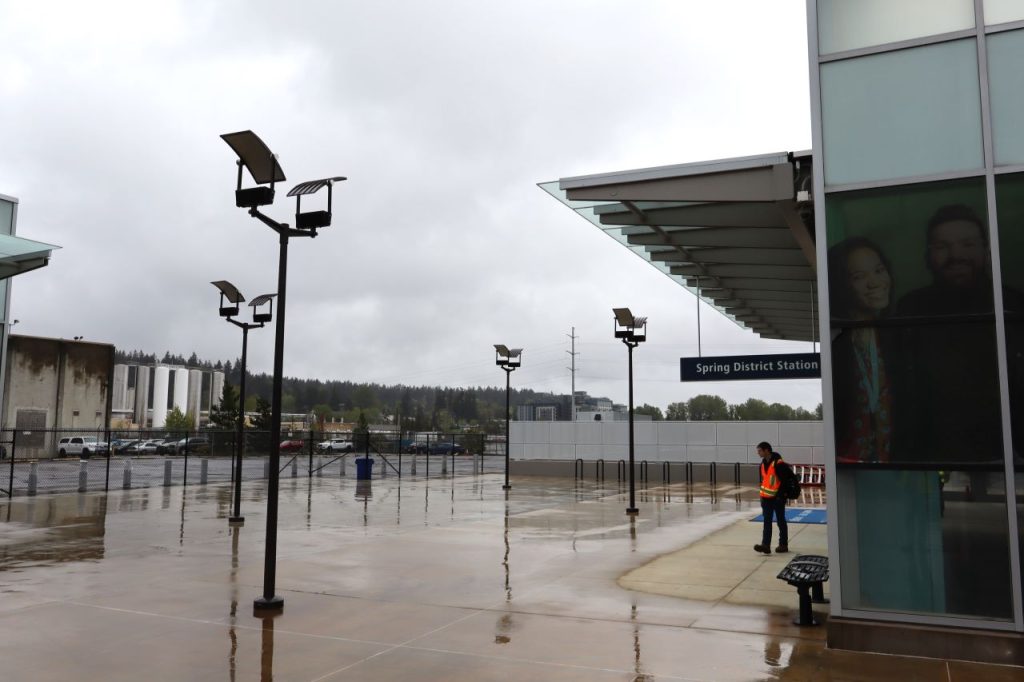
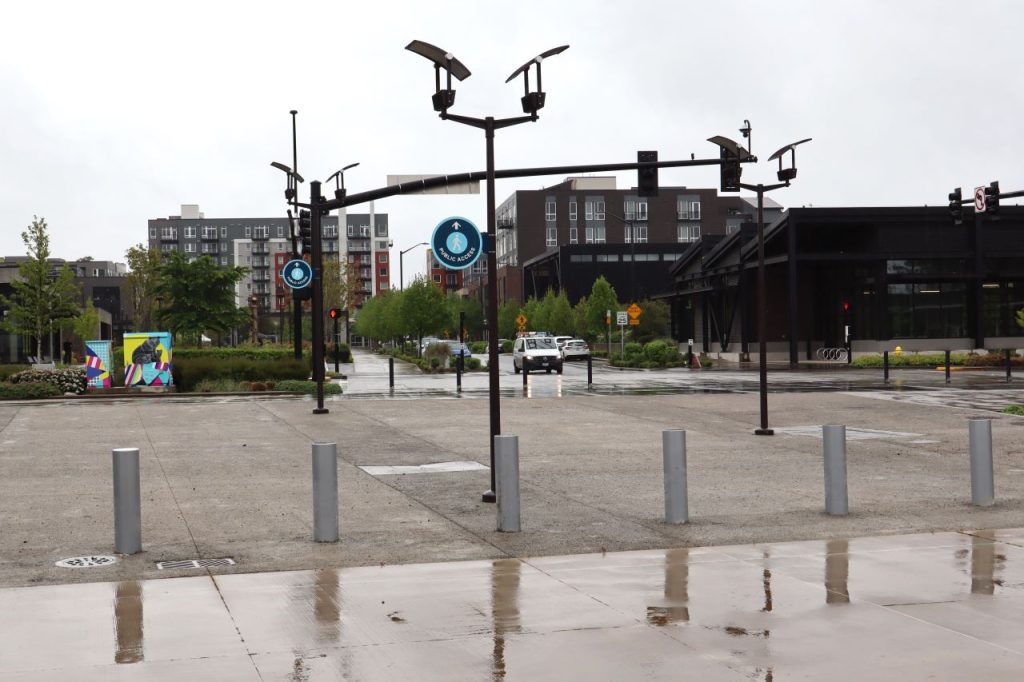
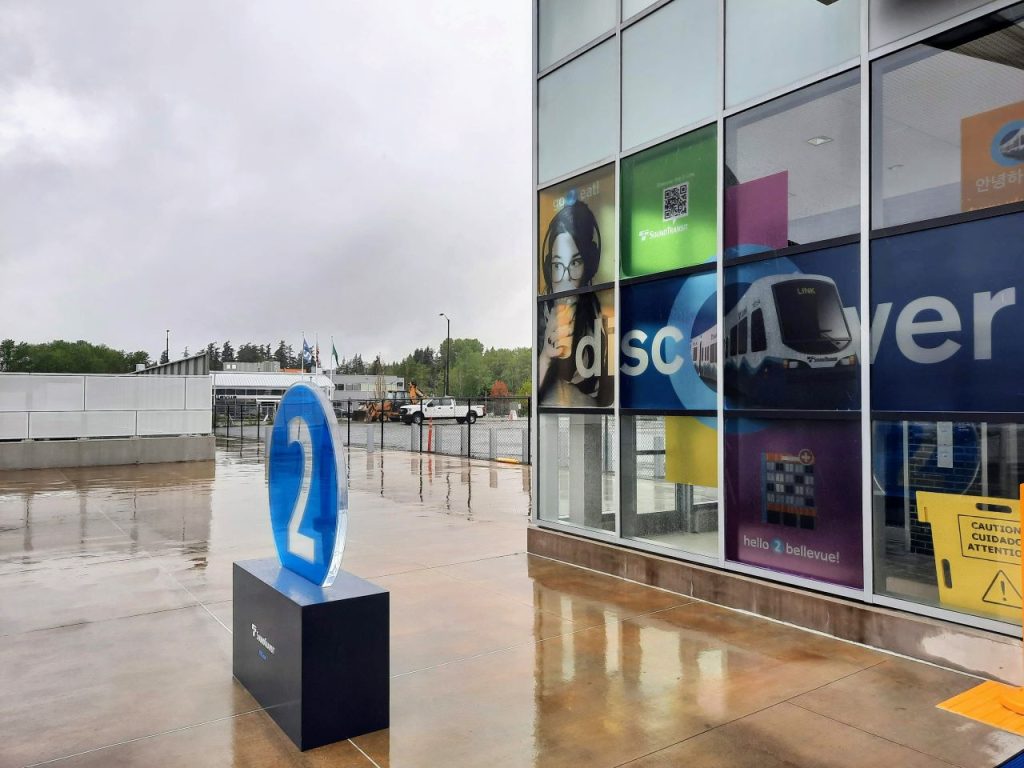
The street grid near the station is pretty fragmented, and the Bellevue City Council has punted on delivering “Bike Bellevue” package of bike and pedestrian safety improvements. However, continued development should slowly piece together the transportation network, bit by bit.
BelRed
BelRed Station is about 0.7 miles east of Spring District Station as the crow flies, but the disjointed street grid easily makes that over a mile by any mode other than flying or the new direct light rail track. Like Spring District, construction is happening right next to the station area. However, overall BelRed has seen less development than the master planned Spring District area. For now, the area is dominated by car shops, strip malls, and light industrial parks.
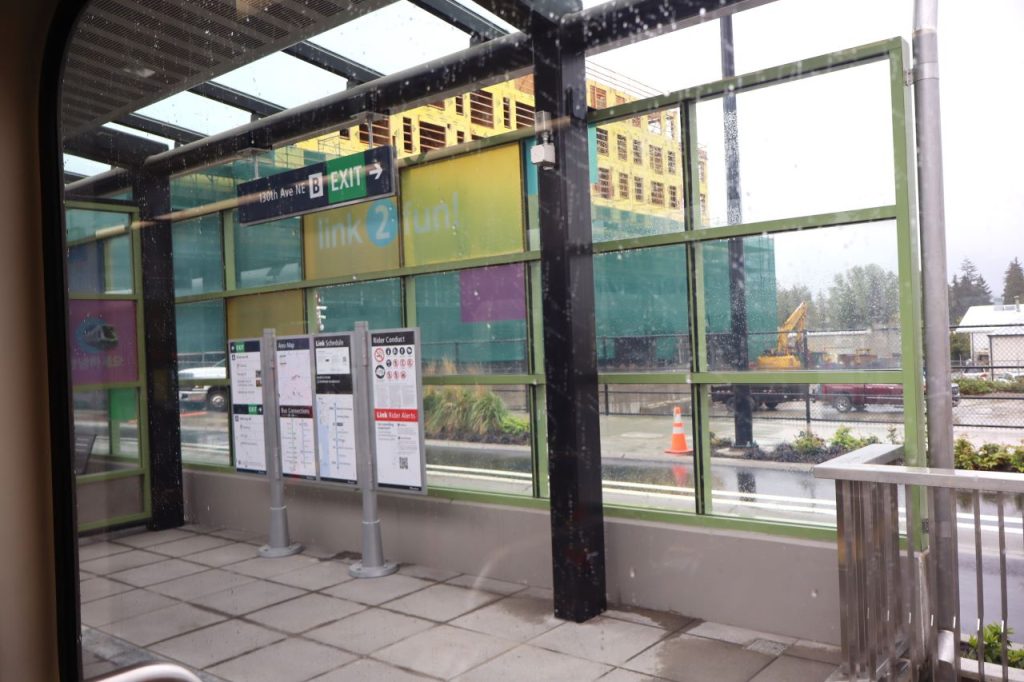
The addition of new development and a brand new Spring Boulevard joining the street network (sometime in the 2030s) could dramatically transform the area. Already 3,500 homes have been built or are in the development pipeline, as we covered in our BelRed roundup.
Overlake Village
Overlake has been a transit-oriented development bright spot with thousands of homes added, most of them as part of Redmond’s Esterra Park master-planned development. The area is at the southern edge of Microsoft’s 500-acre corporate campus. A new pedestrian bridge makes it easier to cross SR 520, which admittedly still does break up the walkshed and TOD opportunities of the station, not just with the freeway trench itself (which is bad enough) but also with a new beefed up freeway on-ramp that the state and City transportation departments recently collabrated to add.
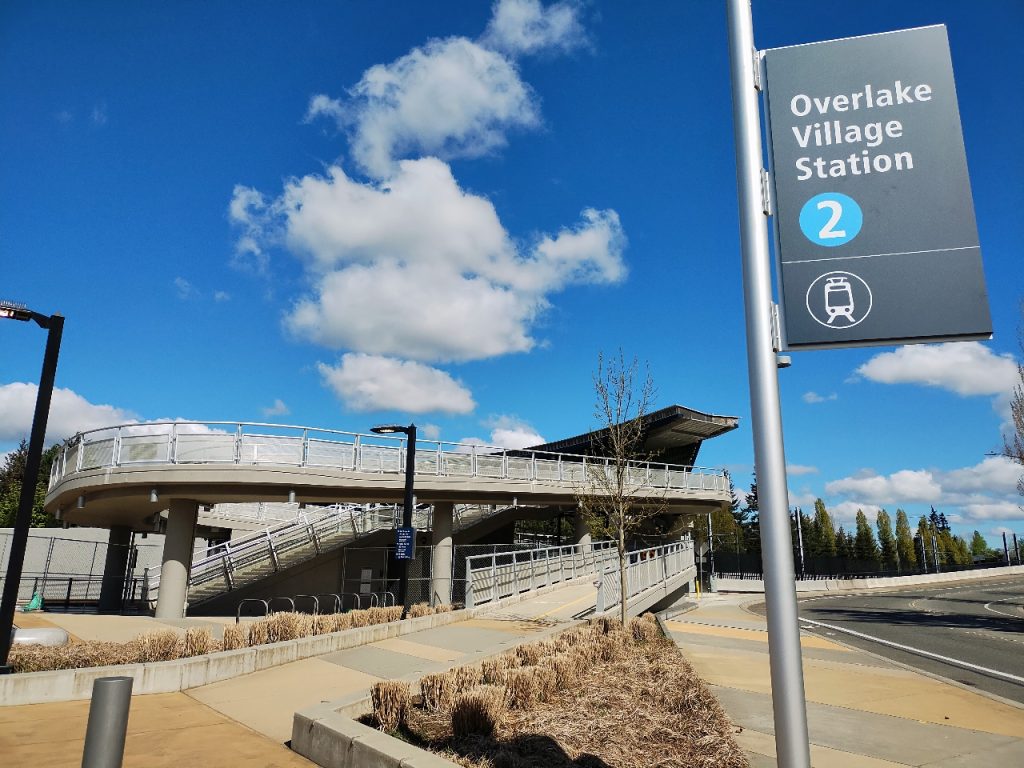
Still the mixed-use apartment district around Esterra Park certainly add an anchor to this fledgling urban neighborhood, and continued development could continue to unlock its potential. Redmond’s long-range plans have emphasized Overlake as a growth center and they have envisioned 300-foot towers in the mix. But the City will need to ensure they do not overload development with fees and extractions if they want to keep the good times rolling, as homebuilders are being expected to build out the street grid, deliver affordable housing, and achieve high environmental sustainability standards all at the same time. Eventually, something has to give or the spigot will turn off.
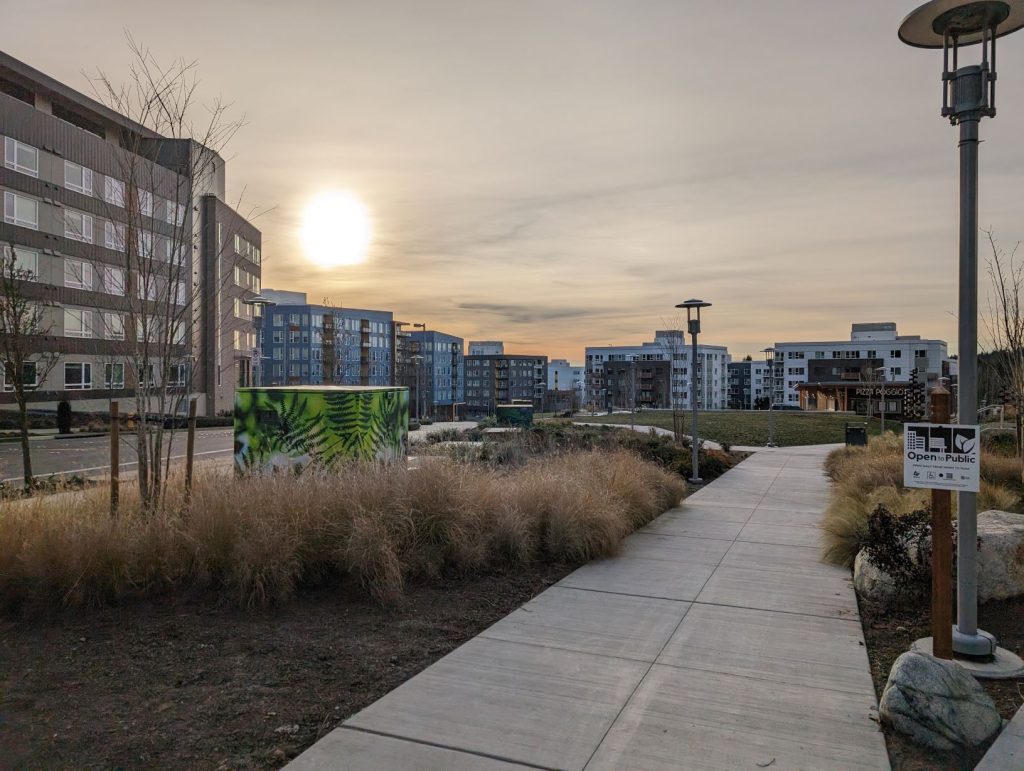
Redmond Technology
The northeastern terminus station is amidst Microsoft’s huge campus and it includes a large parking garage and a grand pedestrian bridge over 520 that just had its ribbon cutting this week. Microsoft is in the midst of a campus refresh that will add about three million square feet of additional office space.
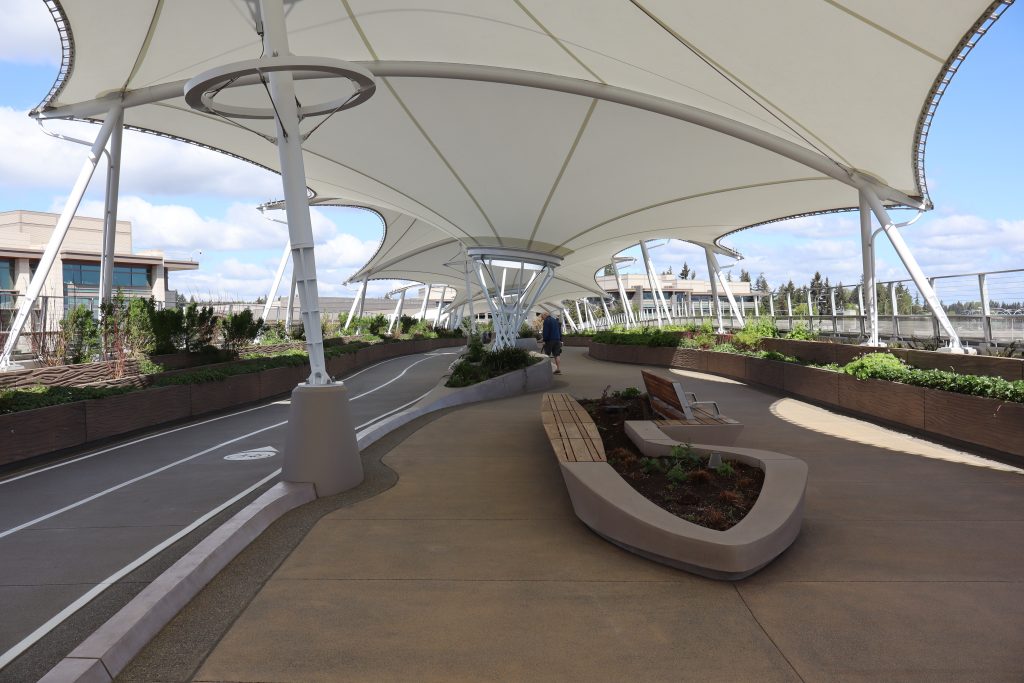
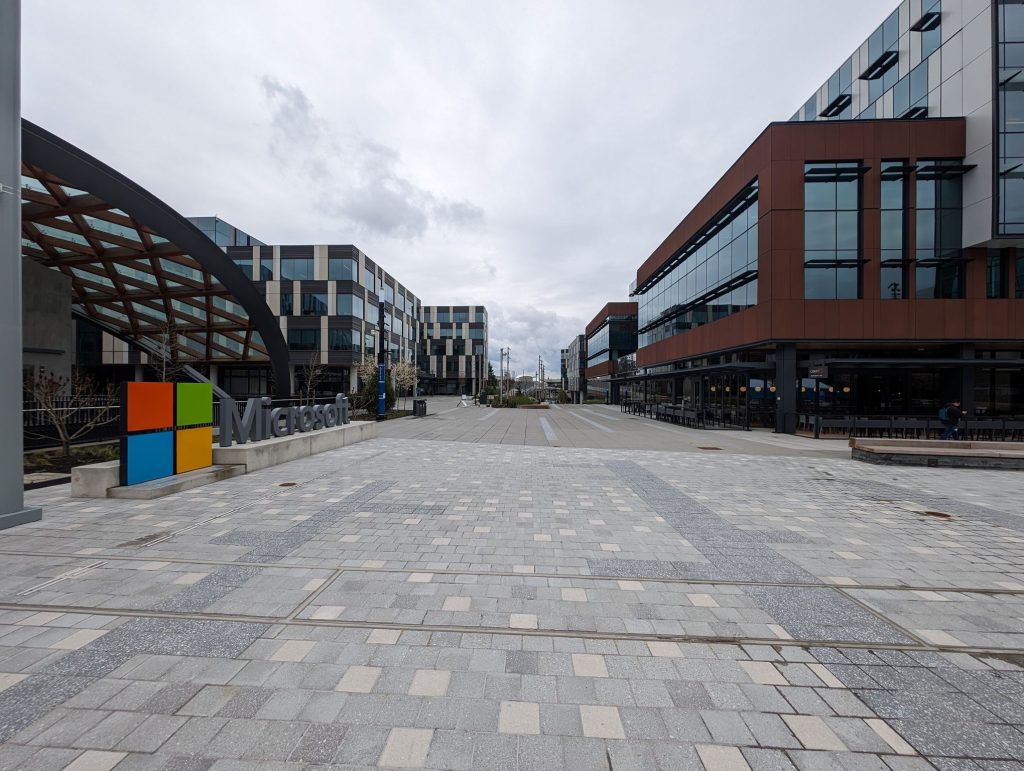
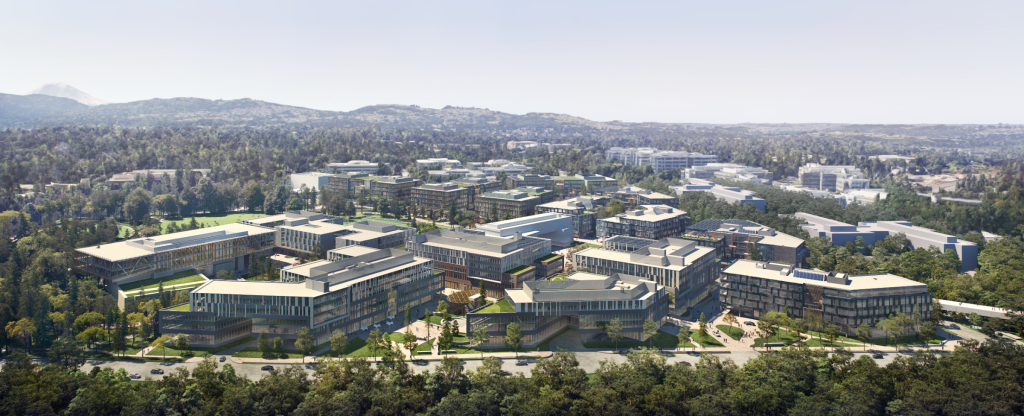
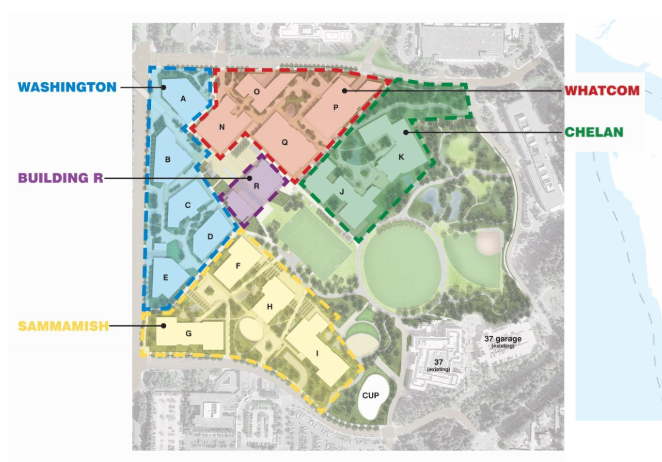
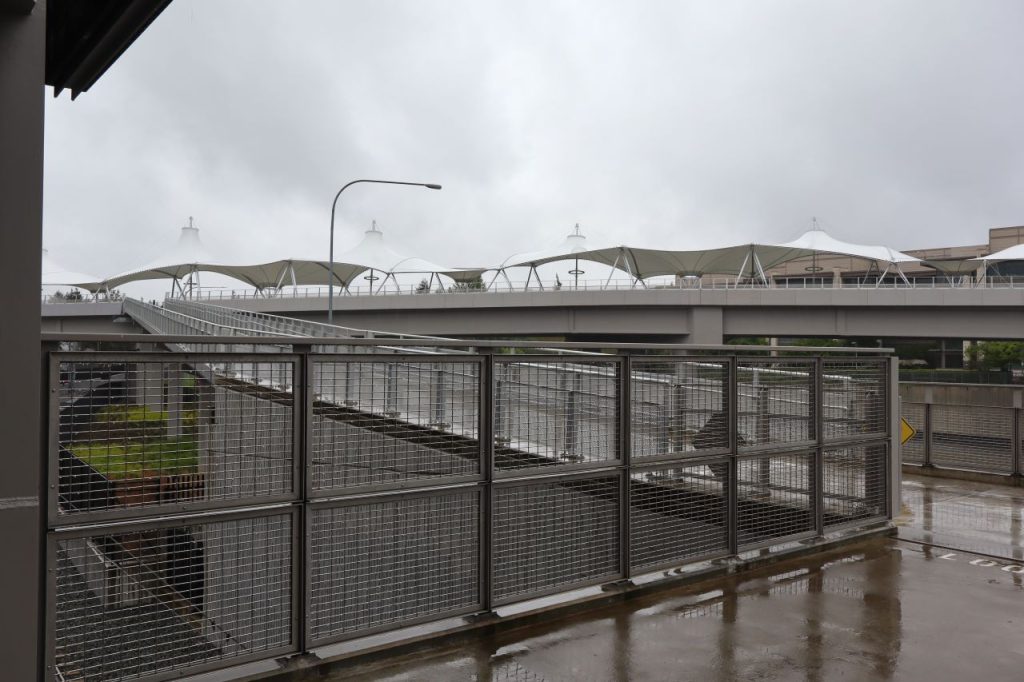
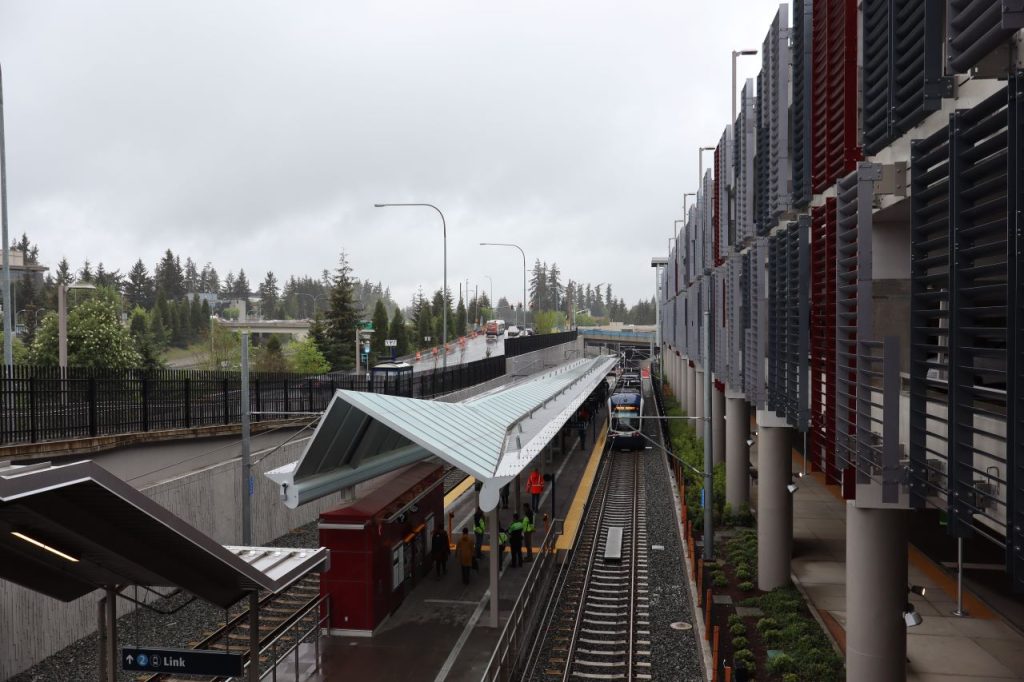
The expanded parking garage (300 additional stalls) looms over the station, with SR 520 projecting a chasm on the other side. The presence of Microsoft means this station is likely to generate significant ridership, but it could have been better.
The flow of transit riders is likely to change all of these neighborhoods in ways subtle and profound as time goes by, and that will be a sight to see.


